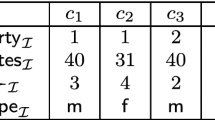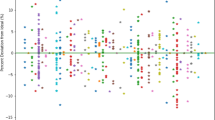Abstract
The biproportional apportionment problem (BAP) must be faced in many proportional electoral systems where seats must be allocated to parties within regions. BAP is a non-trivial optimization problem, and only sophisticated algorithms are currently available for solving it. The issue is: are they “writable” as an actual law? Citizens rightly demand simple, easy to understand, voting systems. The alternative, though, seems to have simple, but unsound electoral laws. We propose the following way out of this dilemma: leave to a mathematically sophisticated algorithm the task of producing an optimal apportionment, but attach to it a “certificate of optimality”, that is, describe a simple procedure whereby anybody can check, through some elementary operations, that the seat allocation output by the algorithm is indeed an optimal apportionment. We discuss one such certificate, based on the Max flow- min cut Theorem, relative to a parametric max flow method of ours for BAP.
Similar content being viewed by others
References
Ahuja RK, Magnanti TL, Orlin JB (1993) Network flows theory, algorithms and applications. Prentice Hall, Englewood
Balinski ML (2004) Le Suffrage Universel Inachevè. Belin, Paris
Balinski M, Demange G (1989a) An axiomatic approach to proportionality between matrices. Math Oper Res 14: 700–719
Balinski M, Demange G (1989b) Algorithms for proportional matrices in reals and integers. Math Programm 45: 193–210
Balinski ML, Ramí rez V (1997) Mexican electoral Law: 1996 version. Elect Stud 16: 329–349
Balinski M, Young HP (2001) Fair representation—meeting the ideal of one man one vote, 2nd edn. Brookings Institution Press, Washington
Gaffke N, Pukelsheim F (2008a) Divisor methods for proportional representation systems: An optimization approach to vector and matrix apportionment problems. Math Soc Sci 56: 166–184
Gaffke N, Pukelsheim F (2008b) Vector and matrix apportionment problems and separable convex integer optimization. Math Methods Oper Res 67: 133–159
Gale D (1957) A theorem on flows in networks. Pac J Math 7: 1073–1082
Maier S, Pukelsheim F (2007) Bazi: a free computer program for proportional representation apportionment. Preprint Nr. 042/2007. Institut für Mathematik, Universität Augsburg, 2007. http://www.opus-bayern.de/uni-augsburg/volltexte/2007/711/
Pennisi A (2006) The Italian bug: a flawed procedure for bi-proportional seat allocation. In: Simeone B, Pukelsheim F (eds) Mathematics and democracy: recent advances in voting systems and collective choice. Springer, Berlin, pp 151–166
Pennisi A, Ricca F, Simeone B (2005a) Malfunzionamenti dell’allocazione biproporzionale di seggi nella riforma elettorale italiana. Dipartimento di Statistica, Probabilità e Statistiche Applicate, Università La Sapienza, Roma, Serie A—Ricerche, no 21
Pennisi A, Ricca F, Simeone B (2005b) Legge elettorale con paradosso. La Voce, 11 Nov
Pennisi A, Ricca F, Simeone B (2006) Bachi e buchi della legge elettorale italiana nell’allocazione biproporzionale di seggi. Sociologia e Ricerca Sociale 79: 55–76
Pukelsheim F (2004) BAZI: a Java program for proportional representation. Oberwolfach Reports 1:735–737. http://www.uni-augsburg.de/bazi
Serafini P, Simeone B (forthcoming) Parametric maximum flow methods for minimax approximation of target quotas in biproportional apportionment. Networks
Simeone, B, Pukelsheim, F (eds) (2006) Mathematics and democracy. Springer, Berlin
Author information
Authors and Affiliations
Corresponding author
Additional information
While the paper was under revision, Bruno Simeone suddenly passed away. We will miss his wide scientific knowledge, his deep vision of the problems and his human kindness.
Rights and permissions
About this article
Cite this article
Serafini, P., Simeone, B. Certificates of optimality: the third way to biproportional apportionment. Soc Choice Welf 38, 247–268 (2012). https://doi.org/10.1007/s00355-010-0528-8
Received:
Accepted:
Published:
Issue Date:
DOI: https://doi.org/10.1007/s00355-010-0528-8




